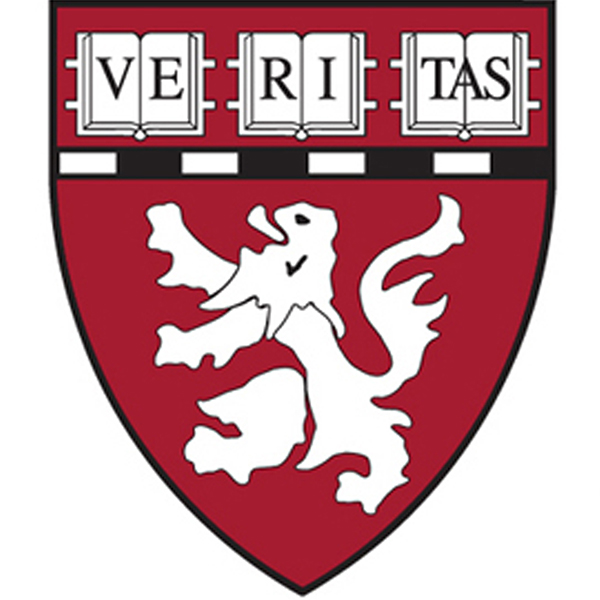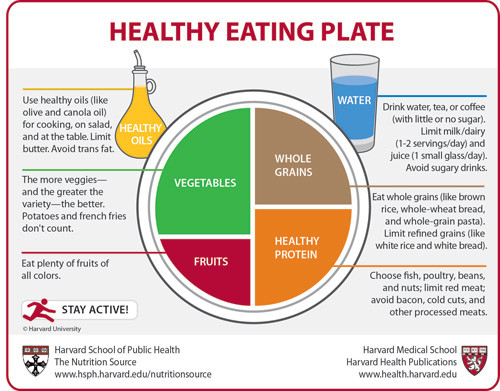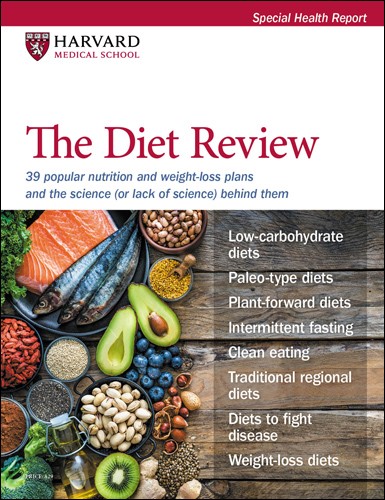Harvard to USDA: Check out the Healthy Eating Plate
Colleagues at Harvard Health Publishing collaborated with nutrition experts at the Harvard School of Public Health to create the Healthy Eating Plate. "We provide consumers with an easy to use but specific guide to healthy eating based on the best science available," says Dr. Anthony Komaroff, a professor of medicine at Harvard Medical School..
(Click here for a larger, printable version.)
Here is what the Healthy Eating Plate recommends:
- Make half your meal vegetables and fruits. Go for variety. And keep in mind that potatoes and french fries don’t count.
- Choose whole grains whenever you can. Limit refined grains, like white rice and white bread, because the body rapidly turns them into blood sugar.
- Pick the healthiest sources of protein, such as fish, poultry, beans, and nuts; cut back on red meat; avoid bacon, cold cuts, and other processed meats.
- Healthy oils (like olive and canola oil) are good for you. Don’t be afraid to use them for cooking, on salad, and at the table.
- Drink water, tea, or coffee. Milk and dairy are not must-have foods—limit them to 1-2 servings/day. Go easy on juice. Avoid sugary drinks.
- And stay active!
The Healthy Eating Plate is based on nutritional science and is not influenced even a smidgeon by commercial pressure. We hope it provides specific direction for anyone who needs help following a healthy diet.
Adapted from a Harvard Health Blog post by Patrick J. Skerrett.
About the Author

Harvard Health Publishing Staff
Disclaimer:
As a service to our readers, Harvard Health Publishing provides access to our library of archived content. Please note the date of last review or update on all articles.
No content on this site, regardless of date, should ever be used as a substitute for direct medical advice from your doctor or other qualified clinician.














